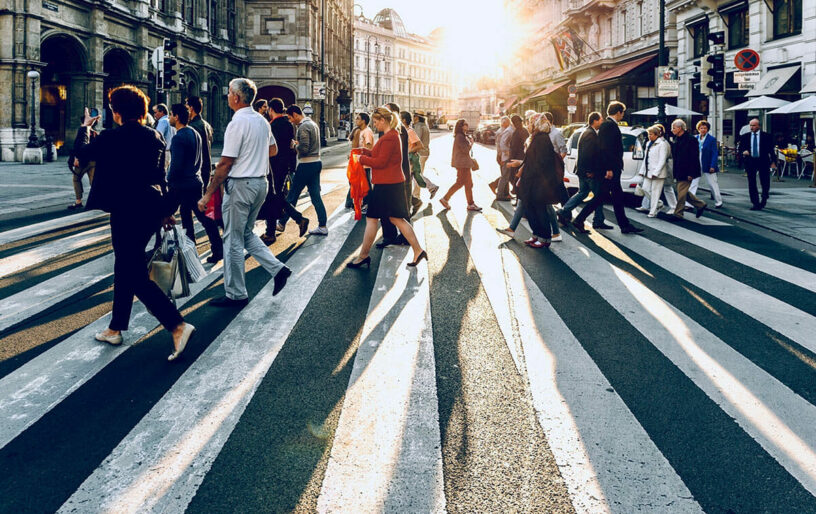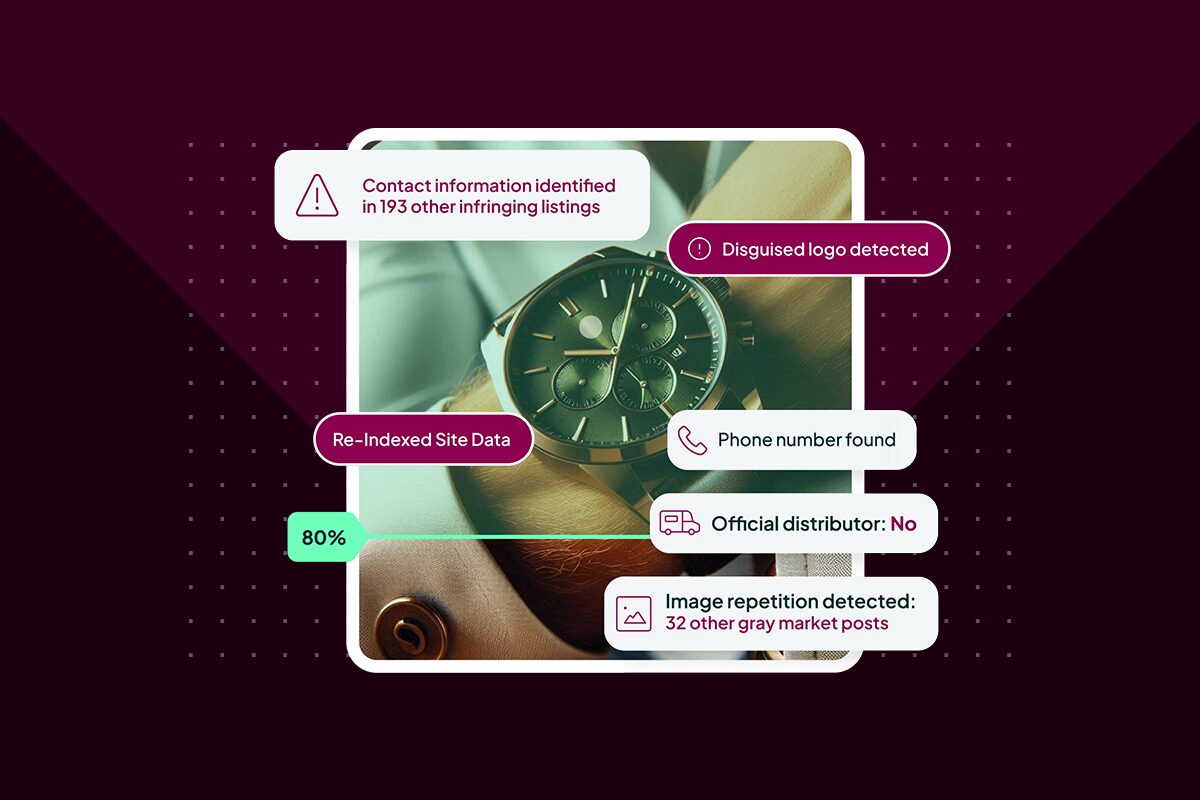Blog
“Tainted Cotton” — Brand Protection and Social Responsibility in Fashion
- Brand Protection

Contrary to the view of those who intentionally buy and sell fake designer clothes from China, counterfeiting is not a victimless crime. There are significant ethical and economic costs that arise from the black market in cheap copies; this includes organized crime, dangers to health and safety, and the abuse of animal welfare. It’s this risk for society as a whole that makes the performance of brand protection and anti-counterfeiting an important choice for socially responsible fashion brands who are protecting more than their profits.
Although we have been aware of the criminal dangers of counterfeits for decades, recent allegations about the Xinjiang region in western China highlight that there is a new threat posed by the trade in fakes — that of the forced labor of Uighur Muslims in one of the world’s cotton growing centers. While fashion brands may be able to secure their own supply chains against the use of materials gained from forced labor, many are also now deploying brand protection strategies to stop the sale of cheap fakes manufactured using these same unethically sourced products.
If an answer were needed to the question ‘why should I protect my brand?’ I believe this is a compelling one.
Allegations of Forced Labor in China
Although the Chinese government have denied any coercion of ethnic minorities, a growing consensus of governments, international media outlets, and humanitarian organizations have all repeatedly condemned the treatment of Uighur Muslims in the Xinjiang region. Late in 2020, 39 Member States of the United Nations expressed grave concern over China’s human rights abuses, citing the treatment of Uighurs as an example of this. Pointing to the alleged one million Uighurs detained in mass ‘re-education’ camps, the German Ambassador Christoph Heusgen said, “Widespread surveillance disproportionately continues to target Uighurs and other minorities, and more reports are emerging of forced labor and forced birth control, including sterilization.”
In July 2020, the Center for Strategic and International Studies (CSIS) in the U.S. suggested that although it was “possible” that minorities were being sent to pick cotton, it also requested more proof. Then, in December, a slew of documents unearthed by a senior fellow at the Victims of Communism Memorial Foundation in Washington, Dr Adrian Zenz, seemingly provided that evidence. In a lengthy investigation by the BBC, it was then alleged that up to half a million people a year are forcibly transported to cotton fields and made to manually pick cotton in the fields of Xinjiang.
These revelations are potentially catastrophic for supply chains worldwide because Xinjiang produces 85% of China’s cotton, which equates to 20% of the cotton picked around the world. Chinese cotton therefore is one of the foundational elements in the global fashion industry and a vital basis for garment production in many countries.
In fact, if these figures are correct, one in five cotton-based items, from t-shirts and jeans to bed sheets and coffee filters, may be linked to this controversial region.
What Actions Are Being Taken?
Although the ubiquity of Chinese cotton makes removing it from legitimate supply chains difficult, many fashion brands are already hard at work on this. In addition, the U.S. House of Representatives has also passed a bi-partisan bill banning products made with Uighur labor.
However, what is less well reported on (and prevented) is the significant number of fashion counterfeits containing Xinjiang cotton.
Because Chinese copies of designer clothing, sportswear, and other forms of apparel are the main challenge for brand protection projects, this vast pool of fake garments is also a potential way that unethical materials will enter global markets.
How common are fake Chinese copies of branded clothes?
The U.S. Department of Homeland Security reported that seizures of counterfeits made at its borders have increased tenfold over the past 20 years, with approximately 90% of these originating in mainland China and Hong Kong. Similar figures also exist in Europe where the EUIPO reported Chinese-origin seizures of around 80%.
This is especially pertinent for fashion brands as the EUIPO also noted in the same report that apparel and clothing products constituted just under 40% of the total number of counterfeits seized by Customs authorities.
This means that the global trade in fashion fakes also presents another avenue through which unethical products can enter the marketplace. It is clearly not the responsibility of any brand which gets counterfeited to police the provenance of fakes — just like it’s not your responsibility if someone steals your car and then uses it in a bank robbery! But I’m proud to say that we work with many fashion brands who also invest in brand protection as a means of doing good in the world.
What they also recognize though is that not only do these proactive actions benefit the world, but that…
Social Responsibility Makes Good Business Sense
In a marketplace rich with choice, many consumers now choose brands based on whether they display values and ethics which mirror their own on key issues like climate change and human rights. To be successful with these ethical consumers, companies are more vocal about the good works they also do.
One Accenture study of nearly 30,000 consumers in 2018 showed that 62% of those surveyed wanted companies to take a position on issues such as sustainability, and 66% thought that transparency was crucial. Obtaining the buy-in of these shoppers depends on being a purpose-led company. This is also likely to increase as future generations of Millennials and Gen Z-ers age. In Cone’s Millennial Employee Engagement Study of over 1,000 people, 64% of Millennials stated that they would refuse to work for a company without a strong Corporate Social Responsibility (CSR) position.
In addition to stopping unethical counterfeits to help the world then, you’re also helping your own business.
Tackling Fakes With Brand Protection Tools
How does Corsearch help fashion companies to challenge the production and sale of unethical fakes? Through a range of solutions and teams of expert Analysts.
Our online monitoring and enforcement platform continuously processes millions of online listings, mentions, images, and other brand-relevant data points. Wherever it is on the Internet, if your brand or trademarks are misused, we find the infringements and the infringers.
One of the areas where Corsearch exceeds other providers is with our ability to create clustered indexes of information, which are then linked within the integrated ecosystem to our offline Intelligence unit. From initial listings to physical enforcement, we monitor and escalate the most dangerous online sellers.
Our experienced Analysts use a variety of in-depth methods to generate, collect, and analyze data. These include open-source intelligence (OSINT), social media intelligence (SOCMINT), and human intelligence (HUMINT) search strategies.
By combining manual methods with data clustering, we create infringer profiles that match digital fingerprints with personal identifiers and other data points. Our investigative reports feature easily visualized networks of connected individuals who we identify and act against on behalf of our customers.
Case Management is a task and document management system designed by brand protection professionals to be customizable to your brand’s needs, workflows, and terminology.
It’s possible to input case-related information, including evidence packages, test purchase tracking, documents, emails, case costs, ROI, customs seizure information, images, contacts, messages, tasks, and invoices. With this one centrally managed, shareable location, it’s possible to easily conduct in-depth enforcement actions in those regions targeting your brand.
Talk to a brand protection expert
To learn how we can help you remove counterfeits and tackle the bad actor networks behind them, talk to one of our experts.






